PLAYGROUND
In the Spirit of Play
MFA THESIS - SOLO EXHIBITION

Making music often is a highly structured activity relying on extensive practice. Yet, in English and some other languages, the word we associate with that activity is the same word we associate with the explorations of a child: play. We can play an instrument and we can play in the dirt. Both forms of play can have social components of engaging with others. This feature of play is not only limited to our species, a wide range of animals also use play to communicate and connect.
This exhibition features a series of objects that are designed to be interacted with to discover the sounds they produce. Some require skill to activate while others will produce sounds just by moving them. The objects allude to artifacts and stories from ancient cultures; their shapes and textures mimic animal forms.
LIVE PERFORMANCE

Performed by Em Adamo, ChrisTina Andersen, Steven Blum, Q Chao, Dee & Jenna, Grace Han, Pierre Lespes, Videographed by Matt Greco
Inner Life is a rattle mimicking the form of a Chinese ivory puzzle ball from the 14th century. It contains many layers of structure. The carving is designed to resemble a pangolin’s armor.
Activated by rolling on the ground, this movement produces sounds that only hint at what might be going on inside.
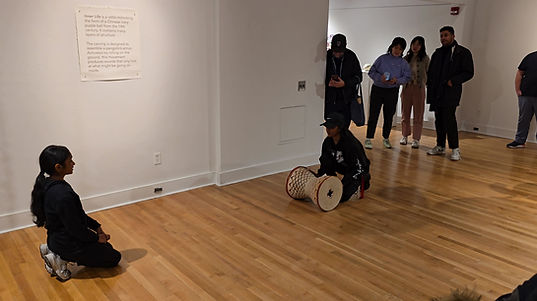
Performed by D Dee and Jenna Dee
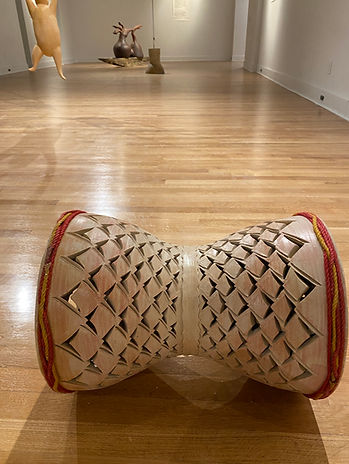
S(w)ing is an aeolian flute made in the form of a gibbon, a species of lesser apes known for their song and for moving through the forest by swinging from tree to tree.
This wind activated instrument creates sound by air passing over the slit when the object is swung.

Performed by Em Adamo & ChrisTina Andersen

Grounded is inspired by Middle Eastern goblet drums (commonly known as darbuka or doumbek). The earliest examples of these drums were in ceramics.
They are to be lifted by a pulley and dropped to the ground, reversing the usual relationship between a drum and the object it contacts to produce sounds.

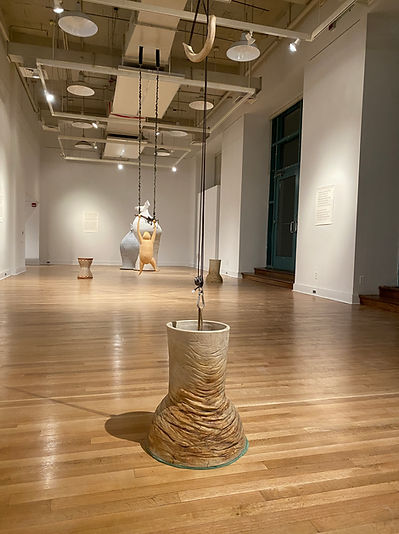
Codas are versions of massive slit gongs or Atingting gongs found in the islands of Oceania. They are played in groups at rituals and social events.
The size of the gongs allow the sound of the code-like rhythms to travel between villages. Similarly, whales communicate in “codas” — short, rhythmic patterns of clicks.
The smaller one is to be struck like the gong while the larger one allows one to experience the acoustics of listening to sounds through a barrier.




Connection
The yin and yang musicians describe Eugenie’s memories of playing Taiwanese folk songs with her grandfather every time she visited her home country. The figures rest on top of a "scholar's rock" which carries the wisdom her grandfather wished to pass to her.
The two musicians are functional “Xun” 【陶塤】. A xun is a type of wind instrument that dates back to 5,000 BC in ancient China.
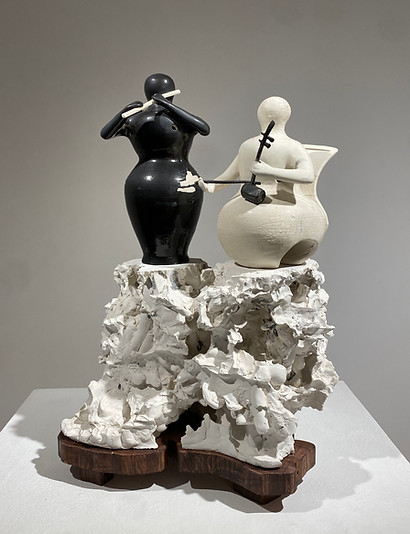

Quiet Melodies
The bass ocarinas share a mellow melody can calm the listeners and bring them to a place of tranquility. Its resonance can also be felt with the vibrating solid surfaces around you.
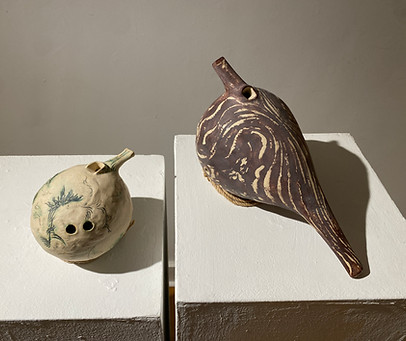

Soundwaves
Humans have been making clay instruments dating as far back as 7,000 years ago. The musical instruments sit on top of a clay landscape of simulated soundwaves. The intersections of these soundwaves allude to the similarities between instruments from various times and cultures.


